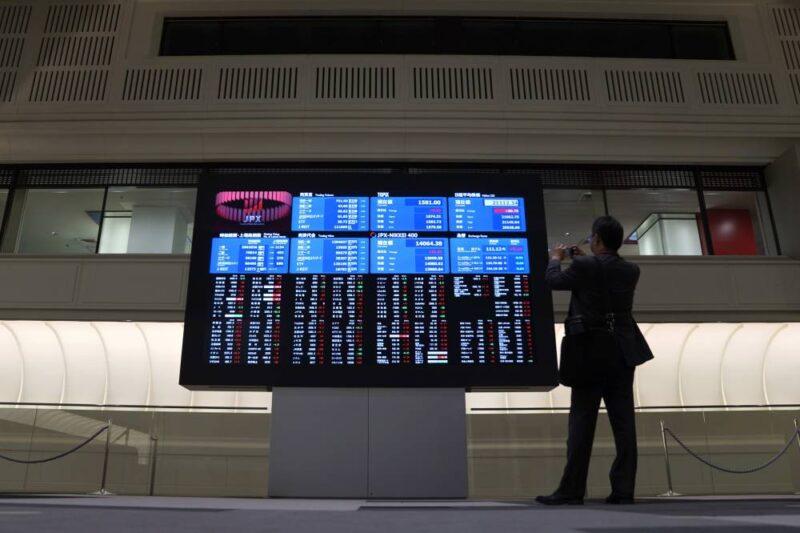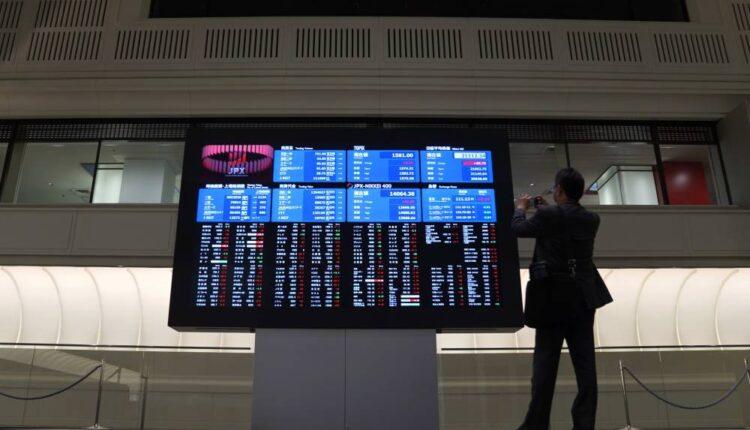
- Shares in Asia Pacific rose on Tuesday, with stocks in China leading gains among the region's major markets.
- South Korea reported Tuesday less than 50 new cases of infection for the second day running. China also posted no new deaths as of April 6 for the first time since January when it started publishing daily updates.
- The Reserve Bank of Australia on Tuesday kept its cash rate unchanged as expected by analysts in a Reuters poll.
Stocks in Asia rose on Tuesday on rising hopes the spread of the global coronavirus pandemic may be slowing.
Mainland Chinese stocks, which returned to trade following a Monday holiday, led gains among the region's major markets. The Shenzhen composite surged 3.184% to about 1,743.37 while the Shenzhen component added 3.15% to 10,428.91. The Shanghai composite was also up 2.05% to around 2,820.76. Hong Kong's Hang Seng index rose 1.88%, as of its final hour of trading.
In Japan, the Nikkei 225 gained 2.01% to close at 18,950.18 while the Topix index gained 1.96% to end its trading day at 1,403.21. The moves came after the country's Prime Minister Shinzo Abe said fiscal spending under Japan's stimulus package to arrest the fallout from the coronavirus outbreak will total 39 trillion yen ($357 billion), according to a Reuters report, citing local news agency Jiji.
Over in South Korea, the Kospi rose 1.77% to close at 1,823.60 as shares of industry heavyweight Samsung Electronics jumped 1.85% after the firm said its first-quarter profit was likely $5.2 billion, slightly above expectations.
Meanwhile, the S&P/ASX 200 in Australia ended its trading day 0.65% lower at 5,252.30 as the Reserve Bank of Australia kept its cash rate unchanged as expected by analysts in a Reuters poll. Following that decision, the Australian dollar changed hands at $0.6186 after an earlier low of $0.6072.
Overall, the MSCI Asia ex-Japan index rose 2.11%.
Investors watched for developments on the coronavirus pandemic, with South Korea reporting Tuesday less than 50 new cases of infection for the second day running. China also posted no new deaths as of April 6 for the first time since January when it started publishing daily updates.
Markets on Monday jumped on signs that the coronavirus outbreak's spread may be slowing. Data over the weekend showed a slowing in the number of daily U.S. coronavirus cases, although it is still too early to determine a lasting trend. Death tolls in some of the world's coronavirus hot spots, including Spain and Italy, also showed signs of easing.
In a note dated April 6, BK Asset Management's managing director of foreign exchange strategy Kathy Lien said "risk sentiment is improving," citing factors such as a slowing pace of the daily death toll in Spain and France as well as new confirmed cases in New York rising at a slower pace.
"These trends suggest that lockdown measures are 'working' but it is still too early to tell if these improvements are sustainable," Lien warned. "Hospitalizations tend to be lighter over the weekend and in some countries in Asia where it seemed like the curve flattened, new cases are cropping up."
Goldman Sachs' Timothy Moe offered a similar assessment of the current situation, telling CNBC's "Street Signs" on Tuesday that the firm is "a bit more skeptical on the prospects for markets."
Acknowledging that the rally was "welcome" and understandable, Moe said: "There still is quite a difficult period ahead of us in terms of the real economy and it can take some time before the virus … and the corresponding curtailment measures … are dealt with."
Globally, more than 1.3 million people have been infected by the coronavirus while at least 74,169 lives have been taken, according to data compiled by John Hopkins University.
Oil prices jumped after their Monday drop. In the afternoon of Asian trading hours on Tuesday, international benchmark Brent crude futures rose 3.12% to $34.08 per barrel while U.S. crude futures added 3.83% to $27.08 per barrel.
The U.S. dollar index, which tracks the greenback against a basket of its peers, was last at 100.205 following an earlier high of 100.79.
The Japanese yen traded at 108.79 per dollar after seeing levels below 108 in the previous trading week.
— CNBC's Yun Li and Weizhen Tan contributed to this report.
Source: cnbc.com

